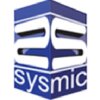2 Couch Potato Media Jobs
WEBSITE DESIGNER & DEVELOPER
Couch Potato Media
posted 1mon ago
Job Role Insights
Key skills for the job
Job Description
Web Design: Create the visual layout and design of websites, including choosing color schemes, typography, images, and overall user interface (UI) elements. Ensure that the design aligns with the client's or organization's brand identity and user experience goals.Front-End Development: Convert the design concepts into functional web pages using web development technologies such as HTML, CSS, and JavaScript. Ensure that websites are responsive and compatible with various devices and screen sizes (desktops, tablets, smartphones).User Experience (UX) Design: Focus on enhancing the overall user experience by creating intuitive navigation, clear calls to action, and user-friendly interactions. Conduct usability testing to improve website usability.Back-End Development: Develop server-side logic and databases for websites using server-side scripting languages (e.g., PHP, Python, Ruby) and database management systems (e.g., MySQL, PostgreSQL).Content Management Systems (CMS): Implement and customize CMS platforms like WordPress, Drupal, or Joomla to manage and update website content easily.Web Performance Optimization: Optimize website performance by reducing load times, improving page speed, and implementing best practices for web optimization.Security: Implement security measures and best practices to protect websites from vulnerabilities and cyber threats. Ensure data protection and user privacy.Testing and Debugging: Conduct testing and debugging of websites to identify and resolve issues and ensure smooth functionality. Cross-browser testing is essential.Version Control: Use version control systems (e.g., Git) to manage and track changes to website code, facilitating collaboration and code management.Qualifications and Skills:Education: A degree in web design, web development, computer science, or a related field can be beneficial, but many web designers and developers are self-taught or have completed specialized training programs.Technical Proficiency: Proficiency in HTML, CSS, JavaScript, and knowledge of front-end and back-end development languages and frameworks.Design Skills: Proficiency in graphic design tools like Adobe Photoshop, Illustrator, or Sketch for creating web graphics and layouts.CMS Experience: Familiarity with content management systems like WordPress or Drupal.Responsive Design: Knowledge of responsive web design principles and mobile-friendly development.Problem-Solving: Strong problem-solving skills to troubleshoot issues and implement solutions.Communication: Effective communication skills to collaborate with clients, team members, and stakeholders.Portfolio: A portfolio showcasing previous web design and development projects can be a significant asset when seeking clients or job opportunities.
Employment Type: Full Time, Permanent
Read full job descriptionSimilar Jobs for you
Share an Interview

























